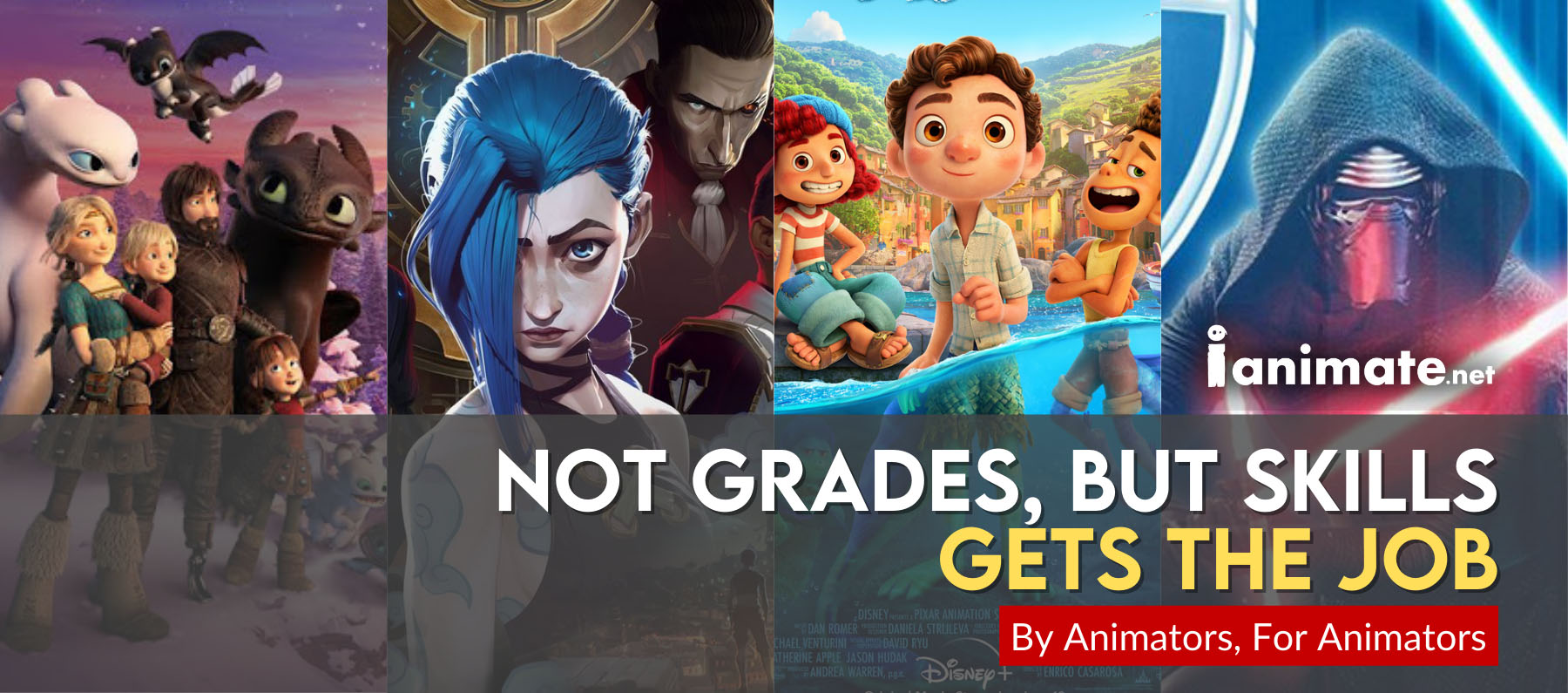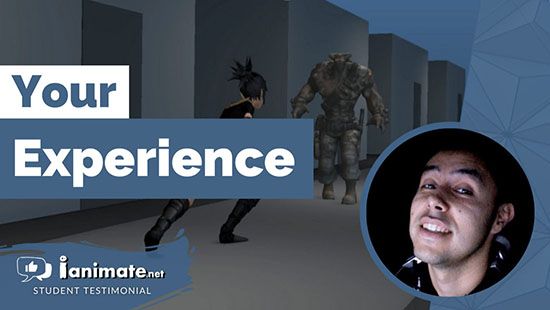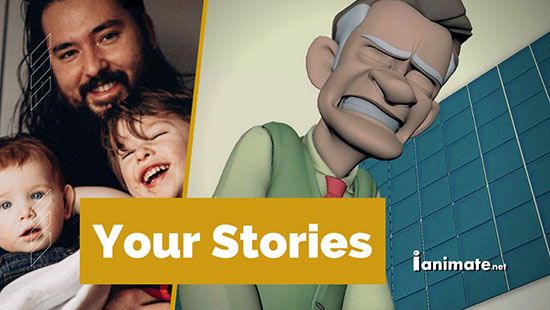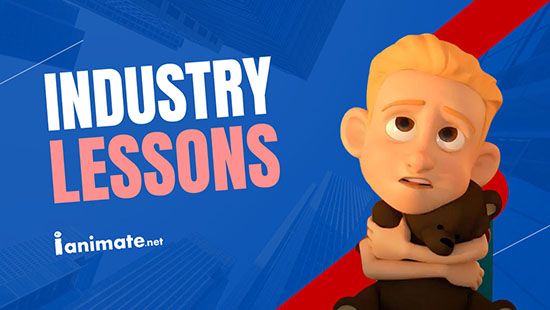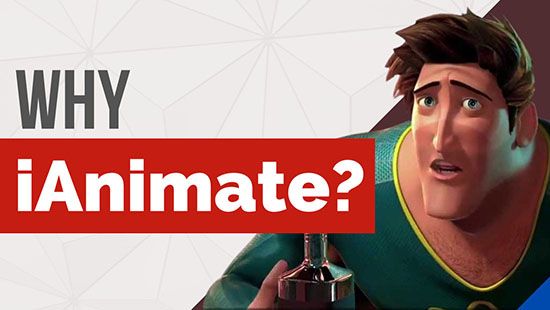Self Teach Animation vs Online School: Real Path to Success
Article by iAnimate
Self teach animation or Online animation school? Compare costs, structure, and career outcomes. Learn what actually gets you hired in the animation industry.
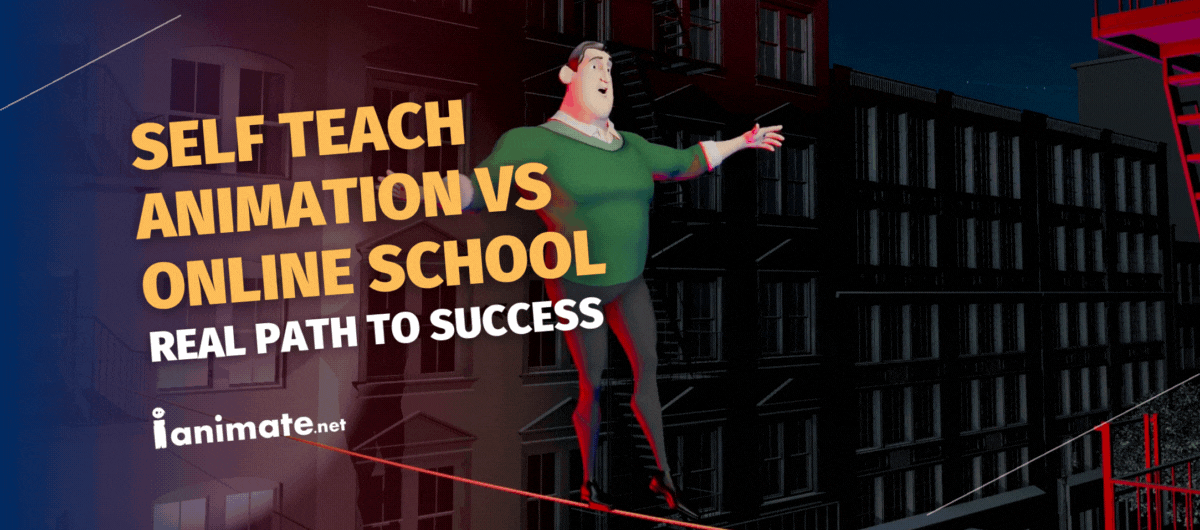
Self Teach Animation vs Online School: Key Highlights
You can self teach animation, but most people underestimate how much discipline and structure it requires to actually succeed. While going fully self-taught is free, online animation schools like iAnimate.net offer the middle ground between expensive degrees and learning alone, giving you expert feedback from industry veterans, a proven curriculum, and networking opportunities at a fraction of traditional costs. What matters most isn't where you learned, but whether your demo reel and portfolio prove you have the skills studios are hiring for.
Introduction
So you want to self teach animation? Great choice. The truth is, the path to becoming an animator has never been more accessible, but it's also never been more confusing, with countless tutorials, courses, and opinions pulling you in different directions. Whether you're considering a traditional degree, going completely self-taught, or exploring online mentorship programs, understanding what the industry actually values will save you years of wasted effort.
The Self-Taught Animator: A Path of Discipline
Let's be real about what self teach animation actually means.
You're the teacher, the student, and the one who has to show up every single day even when Netflix is calling your name.
Nobody's going to tell you what to learn next.
Nobody's going to check if you practiced your walk cycles or studied character design principles.
That's the deal when you go self-directed.
Here's what separates people who make it from people who don't:
Discipline beats talent every time.
You need to create your own curriculum. You need to set your own deadlines. You need to critique your own work honestly.
Most people quit because they underestimate how much structure matters.
Without a roadmap, you'll bounce between random YouTube tutorials on digital modeling one week and storytelling the next, never getting deep enough into anything to actually be hireable.
The self-taught path works when you treat it like a real job.
Block out specific hours for animation principles. Track your progress on 2D and 3D animation skills. Build projects that actually go in your portfolio, not just practice exercises you'll delete later.
If you can handle that level of self-motivation, you'll save money and learn exactly what you need.
If you need more structure and mentorship from industry veterans, programs like iAnimate.net give you that guidance while still letting you learn on your own schedule.
The question isn't whether you can self teach animation.
The question is whether you have the discipline to stick with it when nobody's watching.
Drawbacks of the Self-Taught Path
Let's talk about what nobody tells you when you decide to self teach animation.
It's harder than it looks.
You're going to waste time on the wrong things.
There are thousands of tutorials out there.
Some teach you outdated techniques.
Some focus on flashy effects that don't actually help your reel.
And you won't know the difference until you've already spent months going down the wrong road.
Here are the real problems you'll face:
No clear roadmap
When you self teach animation, every day you wake up and ask: what should I learn today?
Should you focus on animation principles?
Work on character design?
Study storytelling?
Without a structured learning plan, you bounce around and never go deep enough.
Information overload kills progress
YouTube has 10,000 videos on walk cycles alone.
Which one is right?
Who actually knows what they're talking about?
You'll spend more time searching for the "perfect tutorial" than actually animating.
Nobody's checking your work
This is the killer.
You practice your 3D animation.
You think it looks good.
But without feedback from industry veterans, you're building bad habits that'll take years to unlearn.
You're learning alone
No classmates are working on the same problems.
No networking opportunities with other animators.
No connections to people already working at studios.
When a job opens up, you won't hear about it because you're not in the loop.
Motivation crashes hard
Week one: excited and full of energy.
Week twelve: stuck on the same problem, no idea if you're improving, wondering if you should just quit.
Without deadlines or accountability, most people give up before they get good enough to build a real portfolio.
The technical stuff gets confusing fast
Software proficiency matters.
But learning Maya or Blender by yourself means fighting through error messages with nobody to ask for help.
You'll spend hours troubleshooting things an experienced animator could fix in two minutes.
Does this mean you can't self teach animation?
No.
It just means you need to be honest about the animation challenges.
If you want the guidance without the cost of a traditional degree, platforms like iAnimate.net give you structure, mentorship, and a community while you learn on your schedule.
You get the flexibility of self-teaching with the support you actually need to succeed.
Online Animation School: Online Courses and Certifications
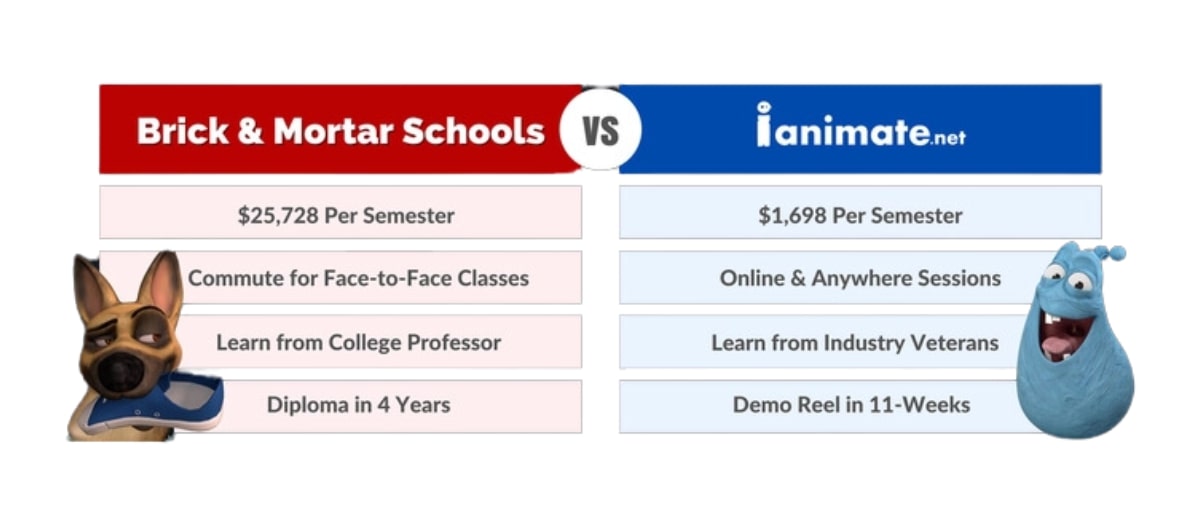
What if you don't want to self teach animation completely alone, but you also don't want to spend $100,000 on a degree?
There's a middle path.
Online animation schools give you structure without the insane cost or rigid schedule.
You get the guidance you're missing when you go fully self-directed, but you still learn on your own time.
Here's the difference:
When you self teach animation by yourself, you're guessing if you're doing it right.
You watch tutorials, practice your character animation, and hope you're improving.
But you don't really know until years later when your reel still isn't landing jobs.
Online courses solve the biggest problem with going solo: feedback.
You need someone who's actually worked at the studios to tell you what's wrong with your work.
Not just "good job" comments from random people online.
Real critique from industry veterans who know what Pixar and Dreamworks expect.
What makes online learning work:
- Learn from professionals - instructors who've actually shipped films and games
- Flexible schedule - no quitting your job or moving cities
- Focused curriculum - someone already built the roadmap for animation principles, storytelling, and technical skills
- Community and networking - other animators at your level, not just you alone in your room
The cost difference is massive.
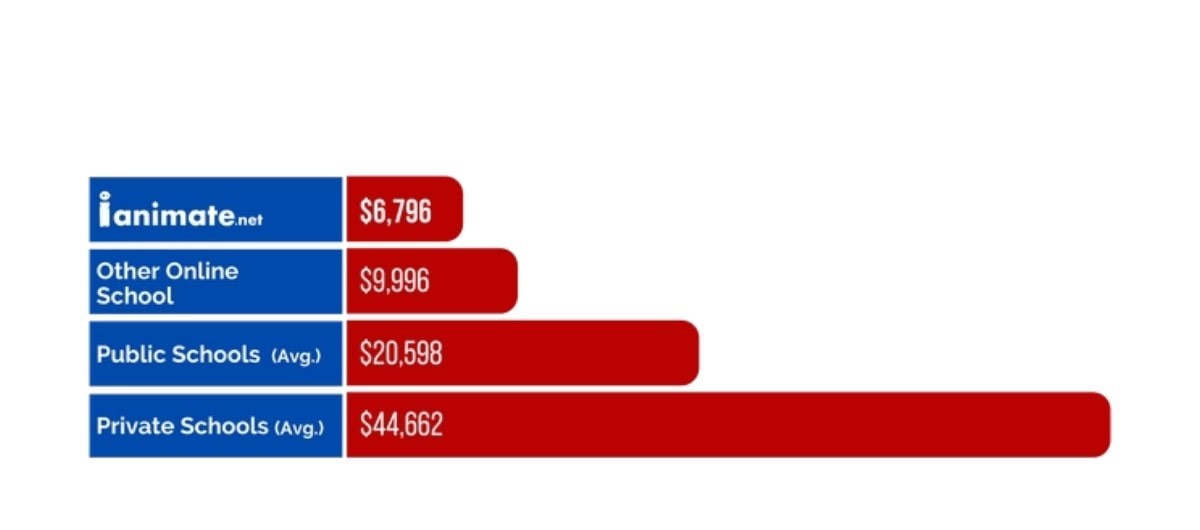
A traditional animation degree: $80,000-$150,000
Quality online training: A fraction of that
You still need discipline.
Online courses aren't magic pills.
You still have to show up and do the work.
But instead of wandering through endless YouTube channels and wondering if you're learning the right things, you follow a proven path.
iAnimate.net gives you direct access to animators from the biggest studios in the world.
We critique your shots.
We show you exactly what's not working.
We help you build a portfolio that actually gets you hired.
You're not fully self-taught, but you're also not stuck in a classroom.
You get the best of both worlds: expert instruction and complete flexibility.
If you're serious about animation but realistic about money and time, this is the path that makes sense.
What Do Employers Really Value Most? Portfolio Over Degree
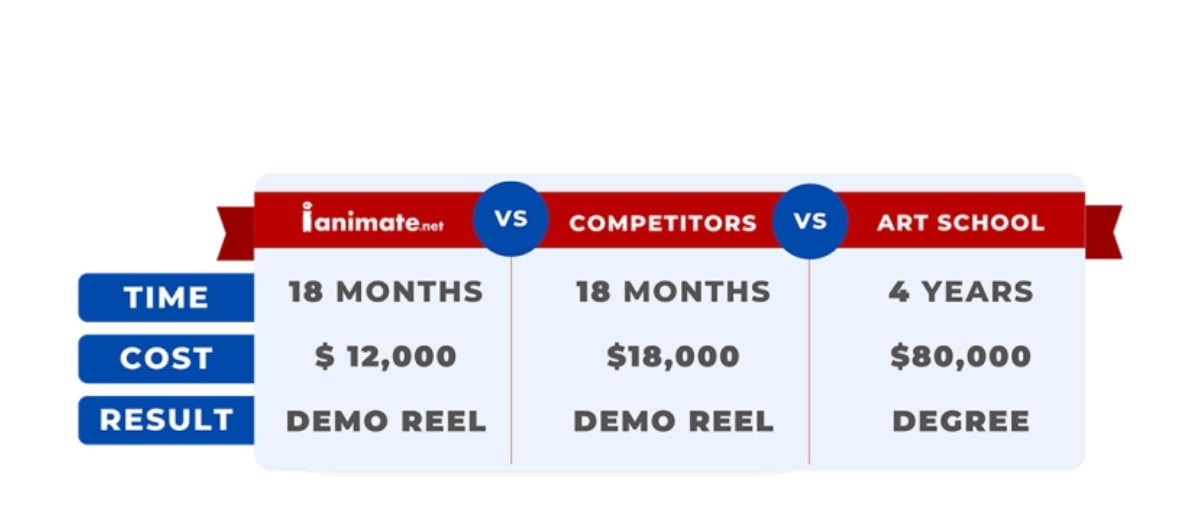
Here's what animation recruiters at Pixar, Dreamworks, and Disney actually look at.
Your demo reel. That's it.
They don't care where you learned.
They care what you can do right now.
We've seen self-taught animators land jobs at top studios because their portfolio proved they understood animation principles better than someone with a fancy degree.
And we've seen people with expensive credentials get passed over because their reel didn't show real skill.
The industry runs on one simple truth: show me, don't tell me.
When you self teach animation, your work has to speak louder than a diploma ever could.
Here's what makes a demo reel actually work:
- Keep it under 2 minutes - hiring managers watch hundreds of these
- Best work only - one weak shot ruins the whole reel
- Show character animation - personality and storytelling matter more than fancy effects
- Prove you know the principles - timing, spacing, weight, anticipation
Your portfolio is your resume.
Nobody cares that you spent four years in a structured learning environment if your walk cycle looks floaty.
Nobody cares about your GPA if your character design is boring.
What they want to see:
- Strong understanding of 2D and 3D animation fundamentals
- Clean work that shows you can actually finish projects
- Range that proves you're not a one-trick pony
Software proficiency matters too. You need to know industry-standard tools like Maya, Blender, or whatever the studio uses.
But here's the thing - they can teach you their pipeline.
They can't teach you how to animate.
If you're worried that self teach animation won't get you taken seriously, stop.
Build a killer reel, and the doors open.
Programs like iAnimate.net help you create portfolio-ready work with feedback from industry veterans who know exactly what studios are looking for.
Your degree doesn't get you the job.
Your demo reel does.
Making Your Decision: Choosing the Right Path
So which way should you go?
There's no perfect answer for everyone.
You need to be honest with yourself about three things: how you learn, what you want, and what you can afford. What’s in it for you = The Benefits
Let me break it down.
Choose to fully self teach animation if:
- You're extremely self-motivated and don't need external pressure
- You have unlimited time to figure things out through trial and error
- You're okay learning alone without feedback or networking
- Money is so tight that even affordable online training isn't possible right now
- You already have animation experience and just need to fill specific gaps
Be real, though.
Most people who say they'll self teach animation end up quitting within six months.
Not because they're not talented.
Because they don't have the structure or accountability to push through the hard parts.
Choose an online animation school if:
- You want expert guidance but need schedule flexibility
- You're willing to invest in your education without going into massive debt
- You learn better with feedback from industry veterans
- You want to build connections with other animators and professionals
- You need a clear curriculum so you're not guessing what to learn next
- You want to build a portfolio faster with professional critique
Money matters, let's be honest about it:
Traditional degree: $80,000-$150,000 plus years of your life
Fully self-taught: Free, but you'll waste time and might never get good enough
Online training like iAnimate.net: Affordable investment that actually gets you job-ready
Ask yourself these questions:
Can you create your own structured learning plan and stick to it for years?
Do you need someone to tell you when your work isn't good enough yet?
How important is networking and industry connections to your goals?
How fast do you need to be job-ready?
Here's what we've seen after years in this industry:
The people who succeed at self teach animation are rare.
They're incredibly disciplined, resourceful, and often take much longer to break in.
The people who invest in quality online training with mentorship get hired faster and build stronger portfolios.
Your learning style matters more than you think.
If you thrive with independence and can handle uncertainty, go ahead and try the fully self-taught route.
If you learn better with guidance, deadlines, and feedback, online courses will get you there faster.
Don't let ego make this decision. Wanting help doesn't make you weak. It makes you smart.
Pick the path that actually matches who you are, not who you wish you were.
Frequently Asked Questions About Self Teach Animation
1. Can you self teach yourself animation?
Yes, you can self-teach animation, but it requires extreme discipline that most people underestimate. You'll need to create your own curriculum, set deadlines, and critique your work honestly without anyone checking your progress. The biggest challenges include wasting time on outdated techniques, having no clear roadmap, dealing with information overload, and lacking professional feedback to catch bad habits early. Most people quit within six months not from lack of talent, but from lack of structure and accountability—however, those who treat it like a real job by blocking specific practice hours and building portfolio-ready projects can succeed and even land jobs at top studios.
2. How can I learn animation on my own?
Learning animation on your own requires creating a structured approach: build your own curriculum focusing on animation principles rather than bouncing between random tutorials, create a demo reel under 2 minutes showing only your best character work that demonstrates storytelling and fundamentals like timing and weight, and develop software proficiency in tools like Maya or Blender while accepting you'll spend hours troubleshooting alone. Consider online animation schools as a middle path—they provide structure, mentorship from industry veterans, and community at a fraction of traditional degree costs while maintaining schedule flexibility, helping you avoid the common pitfall of wandering through endless tutorials wondering if you're learning the right things.
3. What software do I need to learn to self teach animation?
You need to master industry-standard tools that studios actually use.
For 3D animation: Maya or Blender.
For 2D animation: Toon Boom Harmony or Adobe After Effects
For character design: Photoshop
Most studios care more about your animation skills than which specific software you know, but you need proficiency in at least one professional tool.
4. Is self-teaching animation cheaper than online animation courses?
Self-teaching is free if you only use YouTube tutorials and free software like Blender.
But you'll spend years longer getting job-ready, which is lost income.
Online animation schools cost money upfront but get you hired faster with professional feedback and networking opportunities.
Compare that to traditional degrees at $80,000-$150,000, and online training like iAnimate.net is the most cost-effective path to a real career.
5. What's the biggest mistake people make when they self teach animation?
Lack of structure and no feedback.
People jump between random tutorials, never going deep enough into animation principles to actually master them.
They practice for months without knowing if they're building bad habits.
Then they wonder why their portfolio isn't landing jobs.
The biggest mistake is thinking you can figure it all out alone when expert critique could save you years of wasted effort.
